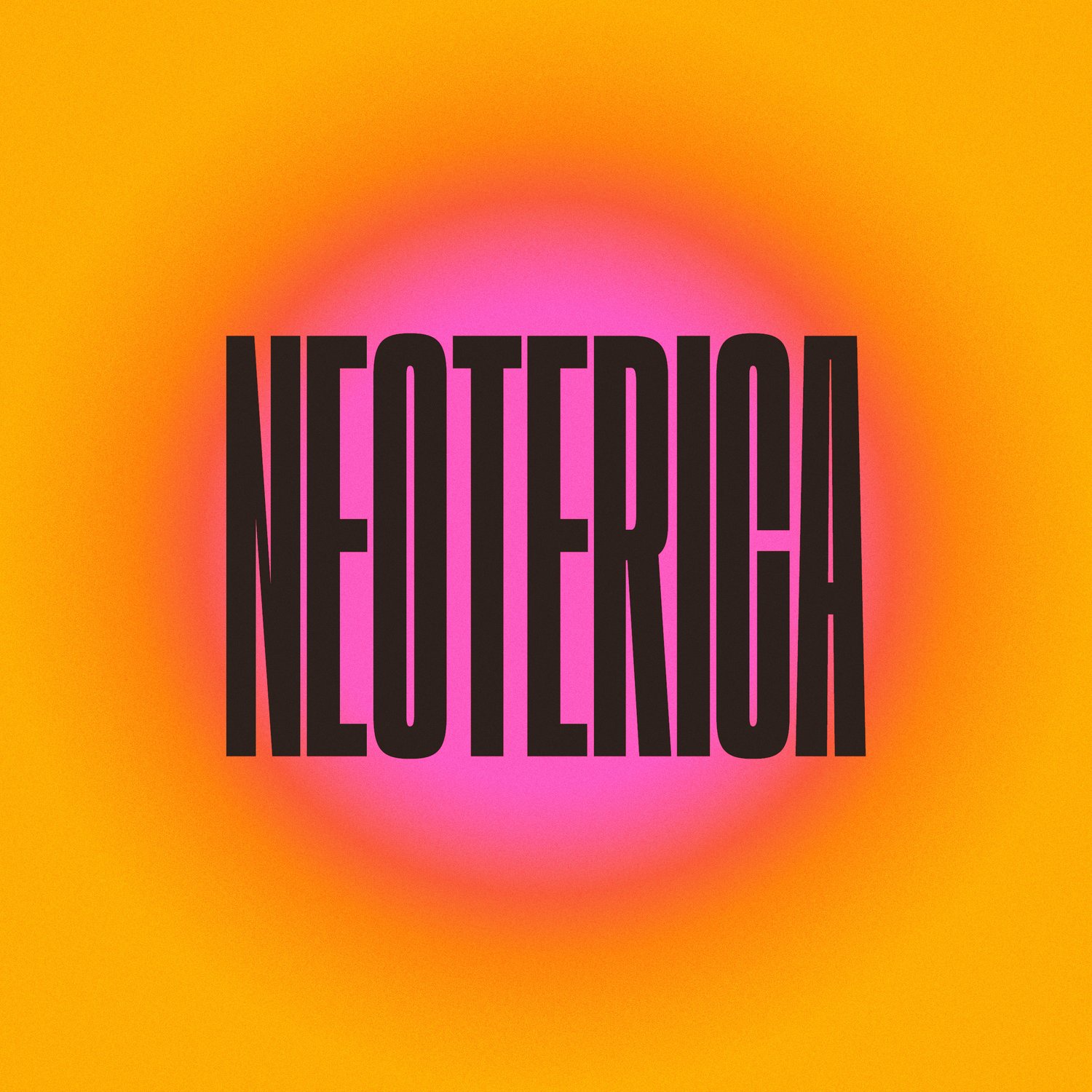Nicole Clift
Nicole Clift writes about Tristan Louth-Robins in Neoterica 2024.
Field Notes
Tristan Louth-Robin’s sound installation Self Noise intentionally isolates gathered field recordings from their associated environments, creating a soundscape rich with ambiguity. This ambiguity heightens the listener’s sense-making biological processes as they adjust (receiver-like) to the aural textures. By choosing recordings that slip between familiar and unfamiliar, Tristan allows the viewer to hear the sounds ‘clean’, but of course they will also inevitably layer their own subjective associations on top.1 In this way, this work is akin to systems that intentionally leave room for as yet unknown discoveries, such as the periodic table or the Dewey decimal system. This ‘room’ is future-oriented and hopeful.
These sound recordings emanate from a central planar sculpture, which similarly shifts in associative states in relation to the different sounds played from within. Dislocating the sounds further is an algorithm that plays two sound files at once, creating an uncanny soundscape of uncertain origin and spatial scale. In Tristan’s work we are at once hearing the micro-bubbles of native Snapping Shrimp (Alpheus edwardsii) and the rushing liquid notes of a creek. Over time, the planar assemblage flickers between natural and abstract states, as the soundscape dictates its associative form – at once a seagrass meadow and an electromagnetic field. In turns, the central sculpture assumes the form of shale, a termite mound, tectonic plates, a tree canopy and futuristic architecture among many others.
This constant shifting and collapsing of associative states render this work akin to a heterotopia: a threshold defined by its otherness and liminality. Self Noise is specifically acting under philosopher Michel Foucault’s Third Principle of heterotopias, as a space ‘capable of juxtaposing in a single real space, several sites that are in themselves incompatible’. 2 Foucault’s examples of such sites include theatres, cinemas and gardens- somehow an apt Venn diagram of Self Noise itself. Foucault’s Fourth Principle is also at work here, with this heterotopia clearly ‘linked to slices of time’.3 Self Noise acts a sensory refuge within the surrounding Neoterica exhibition, the larger structure of the Adelaide Railway Station and even broader- within the disjointed patchwork of experiences comprising our day.
Tristan’s interest in recording these sounds extends beyond the discipline of archiving- he is curious about how the recording device itself interacts with the environment. The title Self Noise refers to the audio created by the recording device coming into contact with surrounding ephemera and atmospheric phenomenon such as wind and rain. These irregular burring and hissing sounds are the auditory trace of technology in situ and underline the post-human and anthropocenic implications of this work.
The promise of technology’s ability to solve humanity’s vast environmental and social problems is arguably the primary issue of our lifetimes – and Self Noise contemplates this predicament as a process of reaching a state of equilibrium. This work subtly suggests the process of stabilising (environmentally, politically, socially) that we are collectively heading towards will render our previous understandings uncanny and unfamiliar.
It may sound something like this…
1 This stripping of familiarity reminds me of composer Olivier Messiaen’s meticulous transcriptions of bird song into human time-scales – which in turn sound haunting, suspenseful and even mournful. https://www.oliviermessiaen.org/birdsong
2 Michel Foucault, “Of Other Spaces”, translated from French by Jay Miskoweic, Architecture /Mouvement/ Continuité, October, 1984
3 Ibid
Nicole Clift is a visual artist and writer based in Tarntanya/Adelaide, working across drawing, textiles and installation. Nicole completed her Honours in Visual Arts (First Class) as a scholarship recipient at Adelaide Central School of Art in 2019. Nicole’s writing practice is centred on thinking around the contemporary experience of time, with recent examples including the fineprint Magazine article Touching Distance and Open Book catalogue essay Something of Note. Nicole has also written catalogue poetry for Max Callaghan’s 2021 solo exhibition Telling to Move on When it’s Not Over. Nicole is also part of tandem projects, a collaborative practice with Netherlands-based visual artist Inneke Taal that contemplates a dialogue between human and planetary scales through site-specific installation. Nicole has exhibited widely in South Australia, and has been selected for extensive artist in residence programs at Carclew House, Central Studios Inc. and Adelaide Central School of Art.

